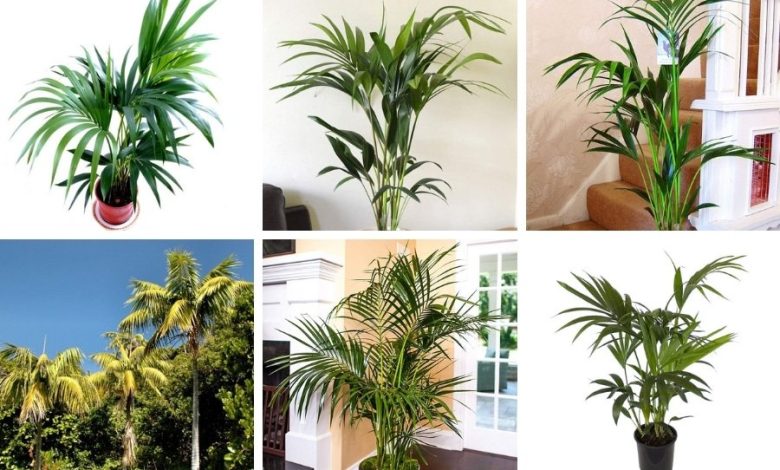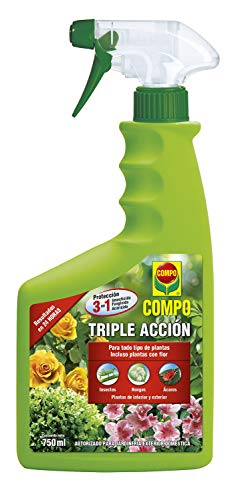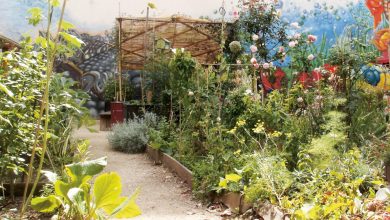Kentia Care: [Soil, Humidity, Pruning and Problems]

What characteristics does the kentia have?

The Kentia is a palm native to Lord Howe Island, Australia. From the arecaceae family whose scientific name is howea forsteariana.
Like all plants of this type, it is slow growing, as it takes many years to reach the dimensions of an adult plant.
It is a plant that renews itself, because its long and thin arched leaves dry up and fall as new leaves appear, giving it back the brightness and tropical beauty that it boasts.
It is a resistant plant that adapts with amazing ease both indoors and outdoors, with good lighting.
For this reason, it represents an ideal alternative for gardening and interior rooms of the house, where it needs ample space to avoid the friction of its leaves.
This versatility has made it very popular in offices and other closed spaces, and at the entrance of buildings where it elegantly displays an enviable warm air.
It grows very well in the Mediterranean, in temperate climate zones, of which there are only two species that are like soulmates due to the common characteristics they possess, since both develop with a single stem with fronds subdivided into smaller leaves, 5 cm wide and 70 cm long. These are:
Belmorean Kentia
Plant of singular beauty that grows 3 meters indoors, but outdoors it can reach 8 meters. It is of pinnate leaves that assume a curved position from the joint as they grow, with stems faded in reddish.
Kentia forsteriana
With stems 1 meter long, they are plants that can reach 15 meters in height outdoors, and 3 meters indoors. We must take into account that this plant grows so slowly that inside it produces only one leaf a year.
What land needs does the kentia have?
It is a tree of great adaptability to all types of soils, which represents in it an advantage difficult to find in other species, although it is good to say that it prefers rich and well-drained soils, especially sandy soils with pebbles at the bottom.
One of its main cares is to water thoroughly, because it does not tolerate excessive water that could rot its roots.
How to make the kentia grow strong and vigorous?

The kentia is an easy-care plant that does not require eccentricities or special treatments.
They grow well in less than ideal environmental conditions and are quintessentially beautiful and lush.
For it to develop vigorously, it is imperative to take extreme care, both in relation to lighting, temperature, soil, humidity and irrigation.
We have already talked about the soil, so now we will deal with the other aspects.
Although it likes the sun due to its condition as a palm tree, the kentia is a type of plant that tolerates a lack of light well.
But indoors we must place it near a window where the light makes contact with it indirectly. Also outdoors, it is necessary to avoid direct sunlight. We must do this until it is five years old, at which time it is very susceptible to light burning its leaves.
The ideal is to keep it at temperatures of 24ºC, away from air currents that can cause irreversible damage to the leaves; in winter it should be at a temperature not lower than 15ºC.
Another aspect to take care of to make it strong and vigorous is watering, which is recommended once or twice a week in the summer and, in winter, once or twice a month.
If we have it planted in a pot indoors, it is necessary to water twice a week, taking care that the pot has good drainage, because excess water, both inside and outside, is harmful to the plant.
At the time of transplanting it, because the pot is small or because we are going to place it in the ground, we must be careful with the roots, so we must carefully remove the root ball, without shaking it to give it air as is usually done in other cases, because any excessive movement can cause the loss of the plant.
What humidity does the kentia need?
Although it does not need excessively humid environments, the Kentia is a plant that must be sprayed frequently. With the sprayer you can moisten the leaves once a day or, at least, every week, especially if you are in dry environments.
Excessive humidity and irrigation are bad for these plants because they suffocate them, although, as has been said, palm trees are very resistant to environments.
Is it necessary to prune the kentia?
Palm trees should not be pruned under any circumstances, as we can damage the trunk that is their backbone.
How often should we prune the kentia?
The palms will fall on their own when they have completed their life cycle, but we can carefully pull them to separate them from the trunk in case they persist in remaining attached to it even in poor condition.

We must not act abruptly with the plant because the leaves arise from a single stem that, if damaged by inexperience, could seriously compromise it.
We should not understand this as a pruning. Pruning is done to plants to give them beauty, removing withered leaves and branches, to make room for new healthy leaves and branches.
How to avoid pests and diseases of the kentia?
The red spider and the cochineal are two of the most staunch enemies of the kentia. The red spider appears when the plant is in a dry environment with high temperatures, in which case it is advisable to spray the leaves with warm water, especially during the summer months. summer.

This care helps the development of the plant and the disappearance of spiders. We have warned about excessive irrigation, because it makes the appearance of fungi and diseases of any kind prone.

The fungus is difficult to control and is the cause of death of this type of plants, so we must insist that the best treatment is to water sparingly, as the good gardener’s book advises, taking care not to flood the soil.


![Photo of How to Plant Boxwood: Complete Guide [Images + Step by Step]](https://www.complete-gardening.com/wp-content/uploads/2022/08/how-to-plant-boxwood-complete-guide-images-step-by-step-390x220.jpg)
![Photo of Grow Mushrooms in Alpacas: [Planting, Care and Irrigation]](https://www.complete-gardening.com/wp-content/uploads/2021/06/setas-en-alpacas-383x220.png)
